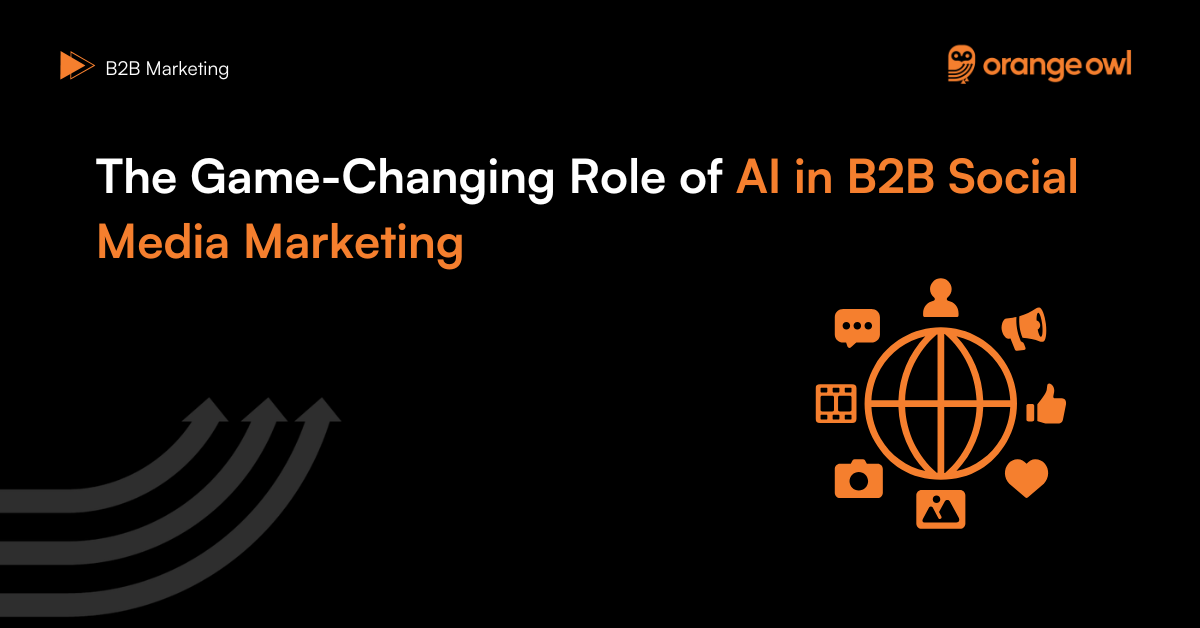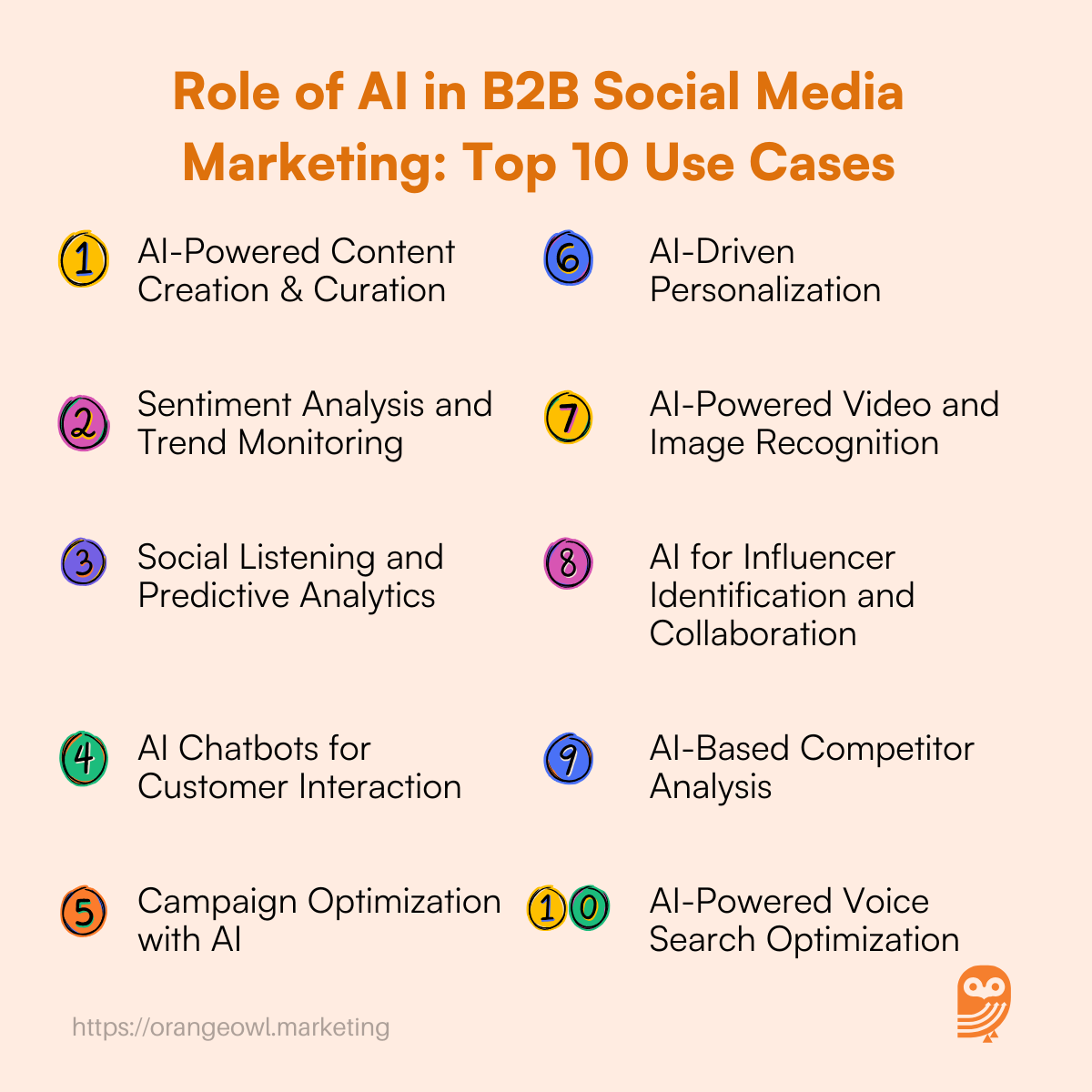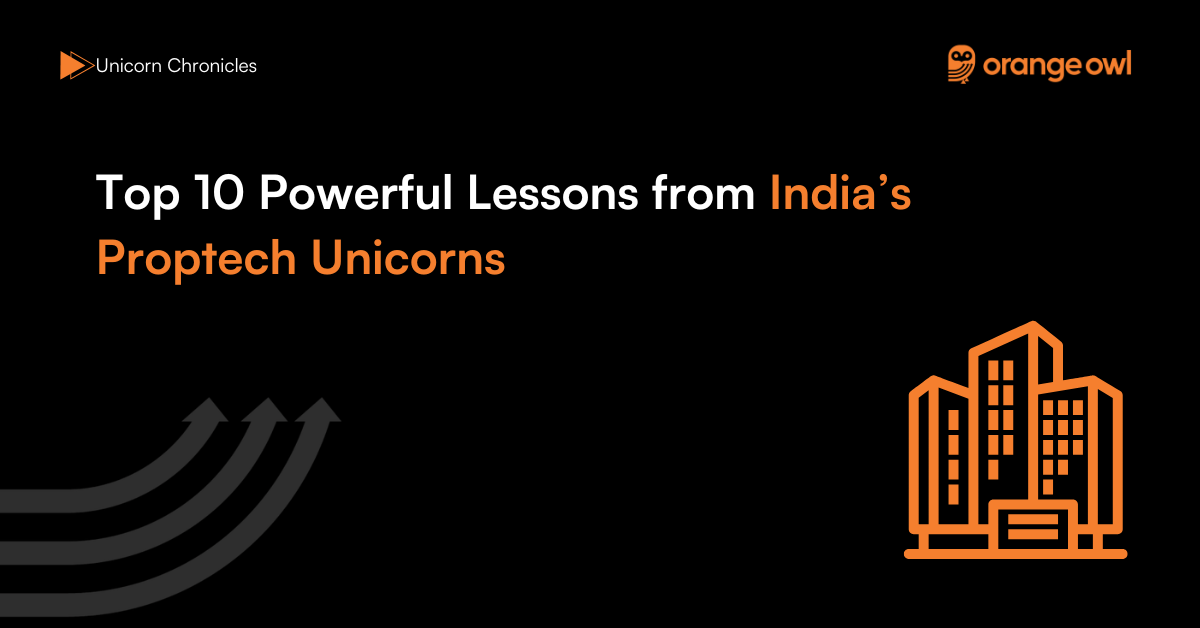The Game-Changing Role of AI in B2B Social Media Marketing
Vivek Goel
April 3, 2025

Table of Contents
Introduction
Social media has become a crucial channel for B2B engagement, with companies increasingly relying on data-driven approaches to optimize their marketing efforts. With the rapid evolution of digital marketing, businesses are embracing innovative technologies to enhance their strategies and stay ahead of competitors.
The Role of AI in B2B Social Media Marketing is at the forefront of this transformation, offering unprecedented capabilities to automate tasks, analyze consumer behavior, and personalize interactions.
According to Statista, the global AI market in marketing is expected to reach $36 billion by 2024, highlighting its growing significance. Furthermore, a report by Salesforce states that 84% of marketers already use AI, a remarkable jump from 29% in 2018, showcasing its increasing adoption in the B2B sector.
As AI continues to advance, the Role of AI in B2B Social Media Marketing is becoming more profound. From automating content creation to optimizing ad campaigns and enhancing customer engagement, AI-driven tools empower businesses to make data-backed decisions and improve efficiency.
This blog post will explore the Role of AI in B2B Social Media Marketing, providing actionable strategies and tools to help businesses maximize their impact.
What is the Role of AI in B2B Social Media Marketing?
AI in B2B social media marketing plays a transformative role by leveraging machine learning, data analytics, and automation to optimize digital marketing efforts. One of its key benefits is data-driven decision-making, where AI analyses vast amounts of user data and engagement trends to refine content strategies.
By understanding audience behavior, businesses can create personalized content tailored to specific client needs, improving engagement and conversions.
AI-powered chatbots and virtual assistants streamline customer interactions by providing real-time responses, answering queries, and even nurturing leads. These automated tools enhance user experience while reducing the workload for marketing teams, allowing them to focus on strategy and creative development.
Automation is another crucial aspect, as AI can handle repetitive tasks like post scheduling, ad optimization, and content generation. AI-driven tools ensure consistency in marketing campaigns while using predictive analytics to forecast trends and adjust strategies proactively. This automation makes social media marketing more efficient and scalable for B2B companies.
AI-powered sentiment analysis also helps businesses monitor audience perception, enabling quick responses to feedback and crisis management. By integrating AI into social media marketing, B2B companies can enhance engagement, improve lead generation, and drive higher ROI with greater precision and minimal manual effort.
Why is AI Important in B2B Social Media Marketing?
- Better Targeting & Personalization: AI helps B2B marketers understand their audience’s preferences, behaviors, and pain points. By analyzing large datasets, AI can segment the audience and tailor content to meet the needs of specific groups. Personalization at scale leads to more meaningful interactions and higher conversion rates.
- Data-Driven Decision Making: AI uses advanced analytics to help marketers predict trends and measure campaign performance. With AI’s ability to analyze real-time data, businesses can make quick adjustments to their campaigns, ensuring optimal performance.
- Automation of Time-Consuming Tasks: AI-powered tools can automate tasks such as scheduling posts, responding to customer inquiries, and even creating reports. This reduces manual effort and frees up time for marketers to focus on strategy and creativity.
- Enhanced Customer Engagement: AI chatbots, predictive analytics, and smart recommendation engines improve customer engagement on social media platforms. By responding instantly to inquiries, providing personalized recommendations, and anticipating customer needs, AI elevates the customer experience.
- Cost Efficiency: Automating repetitive tasks and optimizing campaigns with AI can reduce operational costs, making social media marketing more cost-effective for B2B companies.
Top 10 Ways to Use AI in B2B Social Media Marketing
Use Case 1: AI-Powered Content Creation & Curation
AI-powered content creation tools help businesses generate high-quality, engaging posts, articles, and emails. These tools analyze trending topics, industry discussions, and customer behavior to craft content that resonates with the audience.
AI also curates content by identifying relevant news and reports, keeping companies updated with industry developments. This ensures consistency in brand messaging while reducing the manual effort required for content creation.
Hypothetical Example:
A cybersecurity SaaS company uses AI tools like Jasper AI and ChatGPT to generate LinkedIn articles and blog posts on emerging cyber threats. AI analyzes industry reports and customer concerns to craft compelling, educational content that establishes the company as a thought leader.
The company also uses AI to curate industry news and share expert insights, increasing engagement with IT decision-makers. As a result, their LinkedIn page sees a 35% increase in follower engagement and inbound leads.
Use Case 2: Sentiment Analysis and Trend Monitoring
AI-driven sentiment analysis scans social media conversations to gauge public perception of a brand, competitors, and industry trends. Businesses can adjust messaging and strategies in real-time based on positive or negative sentiment.
AI tools also monitor trending keywords and hashtags to help companies stay ahead of industry developments. This allows businesses to align their marketing efforts with customer interests and concerns.
Hypothetical Example:
A heavy machinery manufacturer launches a new product and uses Brandwatch and Hootsuite Insights to monitor LinkedIn and Twitter discussions. AI identifies customer appreciation for the product’s fuel efficiency but highlights concerns about its user interface.
The marketing team then creates tutorial videos addressing these concerns, leading to improved product perception. As a result, engagement on product-related posts increases by 50%, and customer inquiries rise significantly.
Use Case 3: Social Listening and Predictive Analytics
AI-powered social listening helps businesses track brand mentions, competitor activity, and industry discussions. Predictive analytics leverages historical data to identify upcoming trends and customer needs.
Businesses can proactively create content and campaigns based on these insights. This enables them to stay ahead of competitors by addressing emerging industry concerns before they become mainstream.
Hypothetical Example:
A fintech startup specializing in blockchain payments uses Talkwalker and Sprinklr to track social media discussions on cryptocurrency regulations. AI identifies an increase in concerns about regulatory compliance, prompting the company to publish educational content and host webinars.
By addressing these concerns proactively, the startup attracts new clients looking for compliant blockchain solutions. Over three months, website traffic from social media increases by 60%.
Use Case 4: AI Chatbots for Customer Interaction
AI chatbots enhance customer engagement by handling inquiries, providing product recommendations, and qualifying leads. These bots respond instantly to customer questions, improving response time and reducing dependency on human agents.
AI chatbots integrate with LinkedIn and company websites, providing 24/7 customer support. Businesses can customize chatbot responses based on user behavior and frequently asked questions.
Hypothetical Example:
An industrial supplier integrates a chatbot on its LinkedIn page using Drift AI to automate responses to common product inquiries. The chatbot efficiently handles 80% of questions related to product specifications, pricing, and availability, reducing the workload for sales reps.
AI also identifies high-potential leads and forwards them to human agents for personalized follow-ups. As a result, lead conversion rates improve by 35% while maintaining fast response times.
Use Case 5: Campaign Optimization with AI
AI continuously analyzes campaign performance and adjusts targeting, ad spend, and content placements for maximum effectiveness. AI-powered A/B testing helps businesses identify the best-performing ad creatives and messaging.
Marketers can optimize campaigns in real-time, ensuring cost efficiency and high engagement. This reduces wasted ad spend and maximizes return on investment (ROI).
Hypothetical Example:
A medical equipment manufacturer runs LinkedIn and Twitter ads targeting hospital procurement managers. Using Adzooma and Pattern89, AI analyzes which ad formats and messaging resonate best with their audience.
The AI tool automatically shifts the budget towards high-performing ads and adjusts bids based on engagement metrics. This leads to a 40% increase in ad engagement and a 25% reduction in overall campaign costs.

Use Case 6: AI-Driven Personalization
AI enables hyper-personalization by analyzing user behavior, browsing history, and past interactions. It delivers customized social media content, emails, and ads that align with individual preferences.
AI helps B2B companies segment their audience more effectively and tailor their messaging accordingly. This results in improved customer engagement and higher conversion rates.
Hypothetical Example:
A cloud computing firm uses Dynamic Yield AI to personalize LinkedIn ads based on a prospect’s job role and industry. AI identifies CIOs from financial institutions and automatically displays content on cybersecurity features, while manufacturing executives see posts about supply chain optimization.
By tailoring content to specific decision-makers, the company increases ad engagement by 50% and shortens the sales cycle.
Use Case 7: AI-Powered Video and Image Recognition
AI-powered image and video recognition tools analyze visual content across social media platforms. Businesses can track brand mentions, product placements, and user-generated content to enhance engagement.
AI also helps identify emerging visual trends that businesses can capitalize on. This provides valuable insights for branding and content strategy.
Hypothetical Example:
A logistics company uses Google Vision AI to scan LinkedIn and Instagram posts for images featuring its delivery trucks. AI detects and categorizes these images, allowing the company to engage with users sharing content related to their services.
The company then reshapes its social media strategy by sharing real customer experiences, leading to a 30% increase in organic reach.
Use Case 8: AI for Influencer Identification and Collaboration
AI tools analyze influencer engagement, audience demographics, and content quality to identify the best B2B influencers. Companies can find and collaborate with industry experts who align with their brand values.
AI also tracks influencer campaign performance, measuring impact and ROI. This helps businesses build credibility and reach a targeted audience.
Hypothetical Example:
A renewable energy firm uses Upfluence AI to analyze sustainability influencers on LinkedIn. AI identifies a thought leader with high engagement among corporate sustainability officers and suggests a partnership for a webinar.
The collaboration results in increased brand awareness and a 40% growth in inbound leads from sustainability-conscious enterprises.
Use Case 9: AI-Based Competitor Analysis
AI tools track competitors’ social media activities, content performance, and engagement trends. Businesses can identify content gaps, emerging trends, and industry shifts by analyzing competitor strategies.
AI provides actionable insights to improve positioning and differentiate brands. This enables businesses to develop more impactful marketing strategies.
Hypothetical Example:
A corporate law firm uses SEMrush and Crimson Hexagon to monitor competitor LinkedIn activity. AI identifies that competing firms frequently discuss data privacy laws but lack in-depth case studies.
The firm fills this gap by publishing detailed case studies, leading to a 25% increase in engagement from potential clients.
Use Case 10: AI-Powered Voice Search Optimization
AI optimizes content for voice searches by analyzing conversational queries and adjusting keyword strategies. Businesses can ensure their social media content is discoverable via voice assistants like Siri and Alexa.
AI helps structure posts using natural language, making them more likely to appear in voice search results. This improves search visibility and customer reach.
Hypothetical Example:
A B2B office supply distributor uses Frase.io to optimize content for voice search queries such as “Where can I buy bulk office furniture near me?”
AI-driven keyword analysis ensures their social media posts rank higher in voice search results, leading to a 20% increase in website visits from voice searches.
Common Myths vs. Facts About AI in Social Media Marketing
- Myth: AI will replace human marketers. Fact: While AI can automate many tasks, human creativity, and strategic thinking are irreplaceable. AI serves as a tool to enhance marketing efforts, not replace them.
- Myth: AI is only for large enterprises. Fact: Small and medium-sized B2B companies can also benefit from AI tools to optimize their social media marketing strategies without the need for large budgets.
- Myth: AI-driven social media marketing is too complex for non-technical teams. Fact: Many AI tools are user-friendly and designed for marketers, not just developers. With proper training, any marketing team can leverage AI.
Emerging Trends of Use of AI in B2B Social Media Marketing
1. AI-Powered Content Creation for Maximum Engagement
AI-driven content creation tools are transforming how B2B companies produce social media posts, emails, and blogs. These tools analyze audience behavior to generate personalized and engaging content at scale.
By automating content production, businesses can ensure brand consistency, reduce manual effort, and maintain a steady flow of high-quality content.
2. The Rise of AI-Enhanced Augmented Reality (AR) Experiences
AI is revolutionizing AR by making interactive experiences more immersive for B2B audiences. Businesses can leverage AI-powered AR tools for virtual product demos, interactive training, and 3D visualizations of complex solutions.
This integration simplifies technical concepts and boosts customer engagement through visual storytelling.
3. AI-Driven Voice Search Optimization for Greater Visibility
With voice search becoming a dominant trend, AI tools are optimizing B2B social media content for natural language and conversational queries.
AI-powered analytics help identify trending voice search patterns, enabling businesses to adapt their keyword strategies. This ensures improved search visibility and enhances engagement with voice-search-driven audiences.
Best AI Tools for B2B Social Media Marketing
In the fast-evolving world, Role of AI in B2B social media marketing, AI-powered tools are transforming the way businesses engage with their audience, optimize campaigns, and analyze performance. Here are some of the top AI-driven tools that can enhance different aspects of your B2B marketing strategy:
- Hootsuite Insights – An advanced social listening tool that helps monitor brand mentions, track industry trends, and analyze audience sentiment in real time.
- Sprout Social – A powerful analytics and management platform that offers AI-driven insights to improve content performance and audience engagement.
- ChatGPT – A versatile AI tool for content generation, helping marketers craft engaging posts, captions, and responses to boost audience interaction.
- Lately – An AI-powered scheduling and automation tool that repurposes long-form content into social media posts, maximizing content reach.
- Adzooma – A smart AI-driven ad management tool that optimizes social media ad campaigns, automates bidding, and improves targeting for better ROI.
Each of these AI tools plays a unique role in streamlining B2B social media marketing, helping businesses save time, improve efficiency, and enhance their overall digital presence.
Conclusion
The Role of AI in B2B Social Media Marketing is a game-changer, enabling businesses to automate repetitive tasks, optimize campaigns, and engage customers more effectively.
AI-driven solutions help companies analyze vast amounts of data, providing valuable insights that enhance targeting, content creation, and audience engagement. As AI technology evolves, its ability to improve efficiency and drive meaningful interactions in B2B marketing continues to expand.
By incorporating AI-powered tools into your social media strategy, you can streamline your marketing efforts and achieve better results. Whether it’s AI-driven chatbots for customer interactions, predictive analytics for trend forecasting, or automation tools for content scheduling, AI can significantly enhance the Role of AI in B2B Social Media Marketing.
Businesses that leverage these innovations gain a competitive edge, ensuring that their marketing campaigns remain data-driven and impactful. To begin your AI journey, start experimenting with tools like Hootsuite Insights, Chatfuel, and HubSpot’s AI-driven marketing features.
Utilize AI-powered content creation platforms to optimize your content pipeline, and explore predictive analytics to refine decision-making. Embracing the Role of AI in B2B Social Media Marketing will help your business stay ahead of the competition, drive efficiency, and foster long-term growth.
Frequently Asked Questions(FAQs) on AI in B2B Social Media Marketing
No, AI enhances the efficiency of social media marketing but cannot replace human creativity, strategy, and emotional intelligence. AI assists in automation, data analysis, and content recommendations, but human marketers are still needed to craft compelling narratives and build meaningful relationships.
AI-powered analytics tools analyze demographics, behavior patterns, and engagement metrics to segment audiences effectively. It identifies ideal customer profiles and helps marketers target the right decision-makers with personalized content.
Yes, AI helps identify relevant B2B influencers by analyzing engagement rates, audience demographics, and content performance. It also tracks campaign ROI, ensuring partnerships align with business goals.
Absolutely! AI-powered chatbots, predictive analytics, and automated engagement tools can capture leads, qualify prospects, and nurture them by delivering relevant content based on their behavior and interests.
AI optimizes ad targeting by analyzing data in real time, adjusting bids, and refining ad creatives for better engagement. It also conducts A/B testing at scale to determine which ad variations yield the best ROI.
AI-powered sentiment analysis tools can detect negative mentions and emerging issues in real time. It alerts brands about potential PR crises, allowing them to respond proactively before situations escalate.
Yes, AI tools can analyze engagement metrics to determine which content performs best and then suggest variations optimized for different platforms. AI also automates content resizing, caption generation, and hashtag recommendations.
AI tools monitor content for regulatory compliance, ensuring posts adhere to industry guidelines, privacy laws, and ethical standards. This is particularly useful in industries like finance and healthcare, where strict regulations apply.
AI chatbots and virtual assistants can handle common customer inquiries, provide instant responses, and escalate complex queries to human representatives. This improves response time and customer satisfaction.
AI-powered competitive analysis tools track competitors’ content performance, engagement metrics, posting frequency, and audience sentiment. This allows B2B marketers to refine their strategies, identify content gaps, and stay ahead of industry trends.


